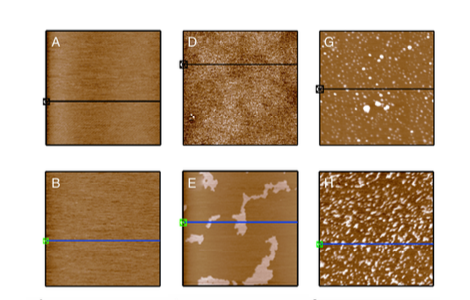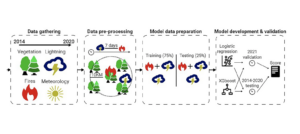Première à Weizmann ! Traiter et diagnostiquer troubles mentaux et dépression grâce à une petite molécule

[:fr]Selon l’Organisation Mondiale de la Santé, les troubles mentaux, comme par exemple la dépression, touchent environ 10 % de la population mondiale, et elles sont associées à de nombreuses autres maladies. C’est la raison pour laquelle beaucoup de scientifiques dans le monde ont investi de gros efforts dans l’étude de ces maladies, et pourtant, à l’heure actuelle, les mécanismes moléculaires et cellulaires à l’origine de ces problèmes ne sont encore que partiellement compris.
Les antidépresseurs existants ne sont pas assez efficaces, et pour environ 60-70 % des patients, ils ne sont d’aucun secours. Quant à 30 à 40 % d’autres malades, ils ne sont soulagés que partiellement, et doivent prendre le plus souvent ces médicaments pendant de longues périodes avant d’en sentir le bénéfice, sans oublier qu’il y a beaucoup d’effets secondaires. La nécessité de nouveaux médicaments plus efficaces est évidente, et il faut pour cela, en premier lieu, une meilleure connaissance des processus et des causes à l’origine de ces maladies.
Le Pr Alon Chen, de l’Institut Weizmann, et la Dr Orna Issler (à l’époque doctorante) ont mené une recherche sur les mécanismes moléculaires du système de la sérotonine du cerveau, qui, lorsqu’il est déréglé, se trouve impliqué dans la dépression et dans l’anxiété. Le Pr Chen et ses collègues ont étudié le rôle des microARN (petites molécules d’ARN non codantes qui régulent différentes activités cellulaires) dans les cellules nerveuses qui produisent la sérotonine. Ils ont réussi à identifier, pour la première fois, les « empreintes » particulières d’une molécule de microARN qui agit sur les cellules nerveuses productrices de sérotonine. En alliant des méthodes bioinformatiques avec des expériences, les chercheurs ont trouvé une relation entre ce microARN spécifique (miR135) et deux protéines qui jouent un rôle important dans la production de sérotonine et dans la régulation de ses activités.
Les scientifiques ont remarqué que, dans la région du cerveau qui contient les cellules nerveuses produisant la sérotonine, le taux de miR135 augmente lorsque des composés antidépresseurs sont administrés. Ils ont constaté que des souris, génétiquement modifiées pour produire ce microARN en quantités plus grandes que la moyenne, étaient plus résistantes à un stress constant : elles n’ont développé aucun des comportements associés au stress chronique, comme l’anxiété et la dépression, qui devraient normalement apparaître. En revanche, les souris exprimant des niveaux bas de miR135 ont montré une augmentation de ces comportements, ainsi qu’une plus faible réponse aux antidépresseurs. En d’autres mots, le cerveau a besoin de niveaux appropriés de miR135 – suffisamment bas pour permettre une réponse normale au stress, et suffisamment hauts pour éviter la dépression ou l’anxiété, et pour répondre aux antidépresseurs qui stimulent la production de sérotonine. Lorsque cette idée a été expérimentée sur des échantillons de sang humain, les chercheurs ont constaté que les sujets souffrant de dépression avaient un niveau exceptionnellement bas de miR135 dans le sang. En approfondissant cet examen, les scientifiques ont découvert que les trois gènes impliqués dans la production de miR135 sont localisés dans des régions du génome connues pour être associées à des facteurs de risques de troubles bipolaires (troubles maniaco-dépressifs).
Ces résultats suggèrent que miR135 pourrait être une molécule thérapeutique utile, aussi bien pour un dépistage sanguin de la dépression ou d’autres maladies apparentées, que comme cible thérapeutique dont les niveaux pourraient être redressés chez les patients. Yeda Research and Development Co. Ltd., l’organisme de transfert de technologiede l’Institut Weizmann, a déposé une demande de brevet concernant ces découvertes, et a récemment obtenu les droits pour la société miCure Therapeutics de développer un médicament et une méthode de diagnostic. Lorsque les tests précliniques seront terminés, la société espère pouvoir commencer les tests cliniques chez l’homme.
Publication dans la revue Neuron, juin 2014.
Le professeur Alon Chen dirige le laboratoire Weizmann-Max Planck de Neuropsychiatrie expérimentale et de neurogénétique comportementale. [:en]According to the World Health Organization, such mood disorders as depression affect some 10% of the world’s population and are associated with a heavy burden of disease. That is why numerous scientists around the world have invested a great deal of effort in understanding these diseases. Yet the molecular and cellular mechanisms that underlie these problems are still only partly understood.
The existing anti-depressants are not good enough: Some 60-70% of patients get no relief from them. For the other 30-40%, that relief is often incomplete, and they must take the drugs for a long period before feeling any effects. In addition, there are many side effects associated with the drugs. New and better drugs are clearly needed, an undertaking that requires, first and foremost, a better understanding of the processes and causes underlying the disorders.
The Weizmann Institute’s Prof. Alon Chen, together with his then PhD student Dr. Orna Issler, investigated the molecular mechanisms of the brain’s serotonin system, which, when misregulated, is involved in depression and anxiety disorders. Chen and his colleagues researched the role of microRNA molecules (small, non-coding RNA molecules that regulate various cellular activities) in the nerve cells that produce serotonin. They succeeded in identifying, for the first time, the unique “fingerprints” of a microRNA molecule that acts on the serotonin-producing nerve cells. Combining bioinformatics methods with experiments, the researchers found a connection between this particular microRNA, (miR135), and two proteins that play a key role in serotonin production and the regulation of its activities. The findings appeared today in Neuron.
The scientists noted that in the area of the brain containing the serotonin-producing nerve cells, miR135 levels increased when antidepressant compounds were introduced. Mice that were genetically engineered to produce higher-than-average amounts of the microRNA were more resistant to constant stress: They did not develop any of the behaviors associated with chronic stress, such as anxiety or depression, which would normally appear. In contrast, mice that expressed low levels of miR135 exhibited more of these behaviors; in addition, their response to antidepressants was weaker. In other words, the brain needs the proper miR135 levels – low enough to enable a healthy stress response and high enough to avoid depression or anxiety disorders and to respond to serotonin-boosting antidepressants. When this idea was tested on human blood samples, the researchers found that subjects who suffered from depression had unusually low miR135 levels in their blood. On closer inspection, the scientists discovered that the three genes involved in producing miR135 are located in areas of the genome that are known to be associated with risk factors for bipolar mood disorders.
These findings suggest that miR135 could be a useful therapeutic molecule – both as a blood test for depression and related disorders, and as a target whose levels might be raised in patients. Yeda Research and Development Co. Ltd., the technology transfer arm of the Weizmann Institute, has applied for a patent connected to these findings and recently licensed the rights to miCure Therapeutics to develop a drug and diagnostic method. After completing preclinical trials, the company hopes to begin clinical trials in humans.
Prof. Alon Chen is the Head of the Max Planck Society – Weizmann Institute of Science Laboratory for Experimental Neuropsychiatry and Behavioral Neurogenetics. Prof. Alon Chen’s research is supported by the Henry Chanoch Krenter Institute for Biomedical Imaging and Genomics; the Perlman Family Foundation, Founded by Louis L. and Anita M. Perlman; the Adelis Foundation; the Irving I Moskowitz Foundation; the European Research Council; and the Ruhman Family Laboratory for Research in the Neurobiology of Stress.
The Weizmann Institute of Science in Rehovot, Israel, is one of the world’s top-ranking multidisciplinary research institutions. Noted for its wide-ranging exploration of the natural and exact sciences, the Institute is home to scientists, students, technicians and supporting staff. Institute research efforts include the search for new ways of fighting disease and hunger, examining leading questions in mathematics and computer science, probing the physics of matter and the universe, creating novel materials and developing new strategies for protecting the environment.[:]




